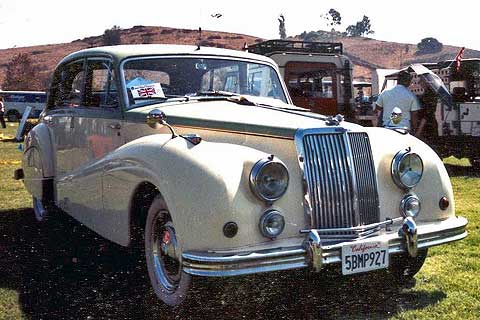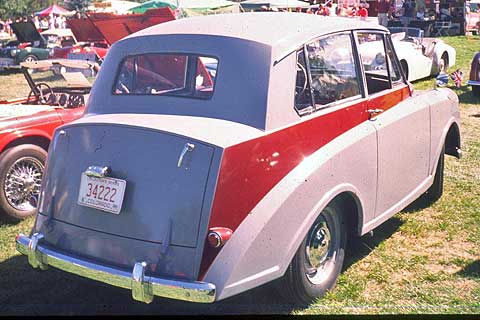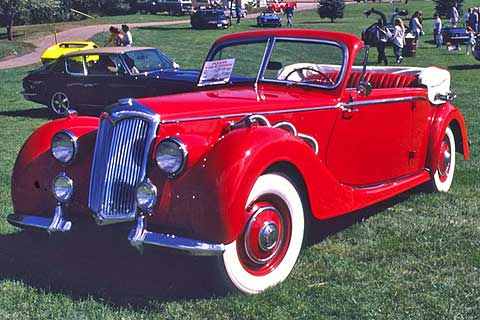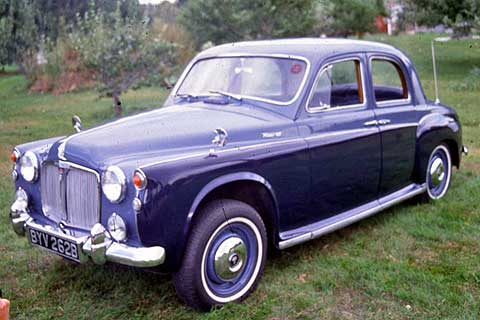
|
| Suicide front doors were still featured on the 1953-57 Armstrong-Siddeley Sapphire 346. |
Before World War II, Americans drove "Detroit iron" exclusively Most Americans never even saw an import, except perhaps in a magazine. After the war, imports became popular. Of course, they most all came from Britain. Automobile manufacturing capability in German, Japan and Italy had been decimated during the war. However, because of its "export or perish" policy in the immediate post-World War II period, virtually every British automobile manufacturer shipped their products to America.
Some brands like Jaguar, MG, Hillman, Morris and Triumph were sold in reasonably large numbers. Others like Armstrong-Siddeleys, Frazer-Nashes, Berkeleys, Jowetts and Singers dibbled in handful numbers. A few brands were sold by established dealers with real showrooms. They had properly trained mechanics, vital for cars that were really not designed for American driving conditions. Most of the less popular brands were sold essentially by independent garage owner who didn't even have a showroom or proper service facilities.

|
| Triumph used British razor-edge styling on the 1949-53 Mayflower earning it the title, "The Watch Charm Rolls-Royce." |
Many of the British cars, especially MGs, were brought to the U.S. by returning servicemen. Indeed, agile sports cars like the MG-TD and Morgan are often credited with inspiring General Motors to built the Corvette.
These British cars are remembered for the aroma of their leather interiors, polish wood interiors, high revving engine sounds and often old fashion styling. Unfortunately, they are also remembered for poor durability, lack of reliability and Lucas electrics. Antiquated designs and poor durability became the Brit's downfall when Americans could purchase German cars like the Mercedes-Benz, Porsche and VW Beetle, and later Hondas, Toyotas and Nissans.

|
| This is one of about 500 Riley 2 1/2-liter Drophead Coupes produced between 1948 and 1950 that were sold in the U.S. |
The British did not only sell economy cars in the U.S. They tried to get a foothold in the near-luxury and luxury market segments with cars like the Aston-Martin, Jaguar, Daimler, Humber, Riley and Wolseley.
If you lived near the Canadian border, you could see more unusual cars like Austin Dorsets and Devons, Morris Oxfords, Ford Consuls and Zephyrs, and Standard Vanguards. Because Canada was then part of the British Commonwealth, very favorable import policies meant British cars were quite cheap in Canada. Some imports even still had right-hand-drive to keep prices down. Thus, many more British brands and models were sold, some say dumped, in Canada.

|
| Rovers like this 1964 Rover P4 "100" was touted as "The Poor-Man's Rolls-Royce," though with a list price of over $4,000, "poor man" might be a stretch. |
While you rarely see a British car, except of course Jaguars and Land Rovers, on the road today, there are many British car enthusiasts who preserve and restore even the most obscure and mundane models. There are also many British car shows around the country were British cars are displayed, often by the hundreds, and you can recall the days when "import meant British."




